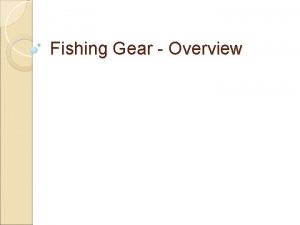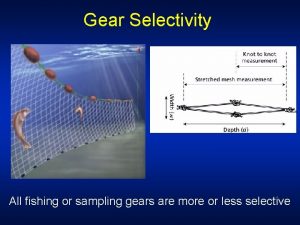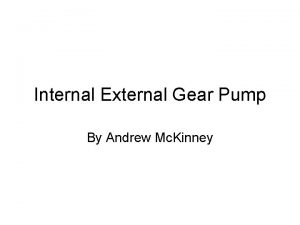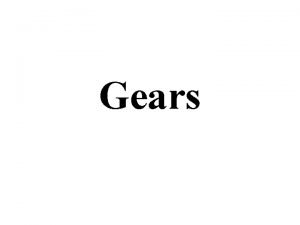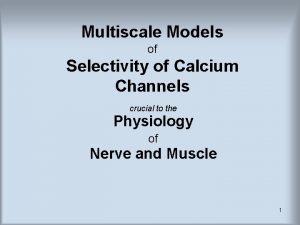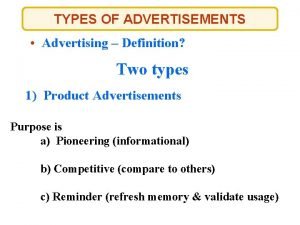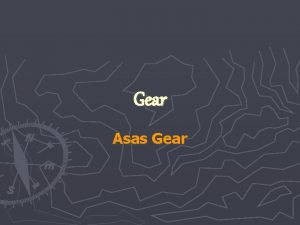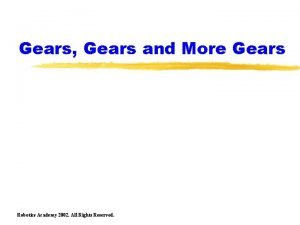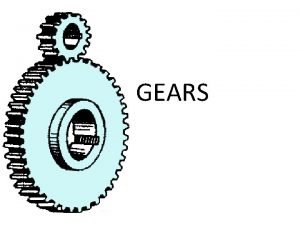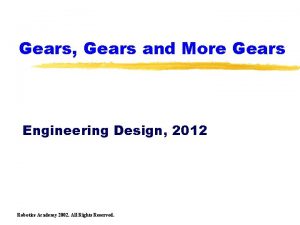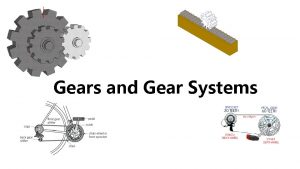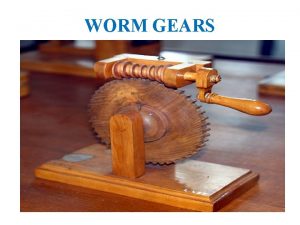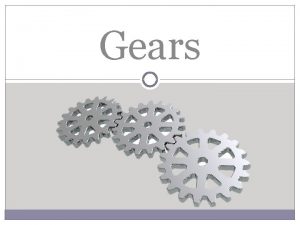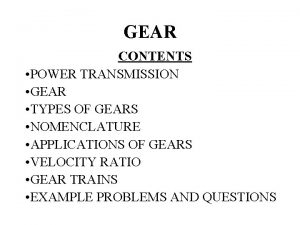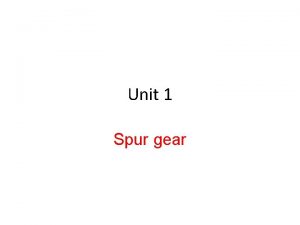Gear Selectivity All fishing or sampling gears are
















- Slides: 16

Gear Selectivity All fishing or sampling gears are more or less selective

What is selectivity? Sample this population with 2 gillnets of different mesh sizes

Gear Selectivity • The fish retained in a gear is usually only an unknown proportion of the various size classes available in the fished population. • Selectivity is a quantitative expression of this proportion and represented as a probability of capture of a certain size of fish in a certain size of mesh (or hook).

Gear Selectivity • From observed catches one can calculate the selection curves, which are the probabilities that a certain length is caught in a certain mesh size

Gear Selectivity • Gillnet, hook, and trap selectivity can be indirectly estimated from comparative data of observed catch frequencies across a series of mesh or hook sizes. • The general statistical model (SELECT) is described in Millar (1992), and the specific application on gillnets and hooks is described in Millar & Holst (1997) and Millar and Fryer (1999)

Gear Selectivity • The principle of geometric similarity: Length of maximum retention (mean length) and spread of selection curve (SD) are both proportional to mesh size (Baranov 1948) With increasing mesh size there is a proportional increase in mean length and SD of the fish caught

Pasgear 2 Version 2. 3 (Build 31. 10. 2007) Jeppe Kolding and Åsmund Skålevik www. cdcf. no/data/pasgear

Gear Selectivity – 5 models Normal location shift Normal scale shift Lognormal Gamma Bimodal normal scale shift μi = mean size (length) of fish caught in mesh size i = k 1 mi σi = standard deviation of the size of fish in mesh i = k 2 mi or α mi Lj = mean size of fish in size (length) class j

Gear Selectivity – 5 models Normal location shift Only means are proportional to mesh size, spread is constant. Normal scale shift Means and spread are proportional to mesh size (principle of geometric similarity). Lognormal Gamma Bimodal normal scale shift Means and spread are proportional to mesh size but with asymmetrical retention modes (i. e. skewed distributions). Means and spread are proportional to mesh size but 2 different capture modes, i. e. fish wedged by the gills and entangled in the mesh sizes

Gear Selectivity – Step 1 • Find the linear part of the mesh size range Exclude

Gear Selectivity – Step 2 • Evaluate appropriate model: skewness

Gear Selectivity – Step 2 • Evaluate appropriate model These plots assist in evaluating whether the mean and SD spread increase with mesh size, and what the degree of skewness is.

Gear Selectivity – Step 3 • Estimate selection curve Probability = less than 1 Sum of all selection curves standardized to 1 Cut off level

Gear Selectivity – Step 4 • Correct observed catches Correcting for gear selectivity can have significant effect when calculating total mortality or growth from length frequency data (Fi. SAT). With no correction mortality may be underestimated

Correcting for gear selectivity Growth ?

Export to Fi. SAT
 Mikael ferm
Mikael ferm Evolution of fishing gears
Evolution of fishing gears Active fishing gear
Active fishing gear Gear selectivity
Gear selectivity Falling gear adalah
Falling gear adalah Difference between external and internal gear pump
Difference between external and internal gear pump Driver gears
Driver gears Contoh event sampling
Contoh event sampling Probability sampling vs non probability sampling
Probability sampling vs non probability sampling Stratified sampling vs cluster sampling
Stratified sampling vs cluster sampling Objective of sampling
Objective of sampling Sampling in research
Sampling in research Cluster sample vs stratified
Cluster sample vs stratified Natural sampling vs flat top sampling
Natural sampling vs flat top sampling Name a point that is collinear with the given points
Name a point that is collinear with the given points Selectivity
Selectivity High dmoegraphic and geographic selectivity
High dmoegraphic and geographic selectivity


